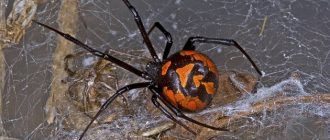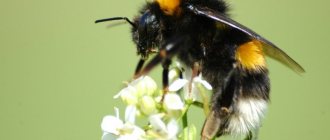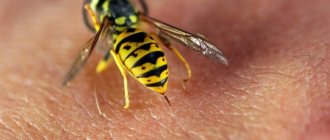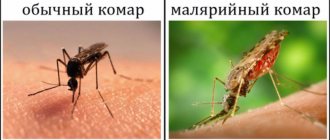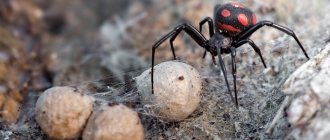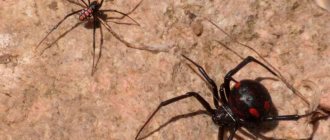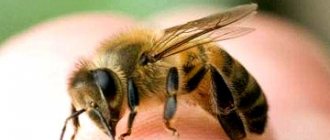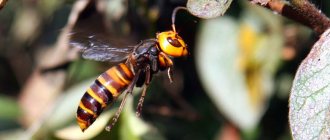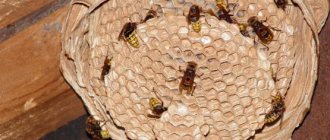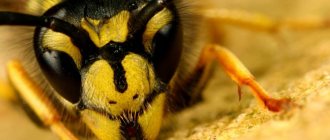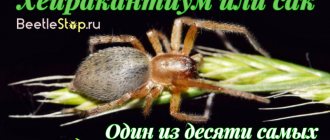A house spider bite is a phenomenon that affects more than 10,000 people every year. Although spider bites are fatal in some cases, depending on the geographic distribution of the arthropod, they are generally benign and harmless.
There are three types of lesions:
- Local. The reaction occurs at the site of the bite.
- System. The reactions affect several human systems or organs due to the specific action of the spider's venom.
- Allergic. Observed in people with individual allergic reactions to a house spider bite.
Local reactions usually develop on the skin and do not pose a fatal threat to humans, but the last two can affect human health and lead to death.
Who are spiders?
A spider is an arthropod insect belonging to the class of arachnids. Modern science has more than 40,000 varieties. Almost all are predators and feed on a variety of fauna (from midges to small birds).
The territory, which previously included all countries of the USSR, is inhabited by more than 3,000 species of arthropods. How can you tell which spiders bite and which don't?
Remember! All arthropods bite.
Spiders weave webs to catch their prey. Some types of spider webs are used to produce silk. When food falls into the trap, the arthropod hunter releases poison into the body. Almost all species are poisonous, but differ in the strength and nature of the poisonous substance, as well as the power of the bite. Small individuals cannot bite through human skin and are included in the “non-dangerous” group, while others easily release toxic substances into the body. How a spider bites depends on the type and size of the insect. Almost all patients report sharp pain like a pin prick.
Scientists divide spider poisonous substances into two types:
- Necrotic.
- Neurotoxic.
The first has an effect on blood cells and the epidermis, causing necrosis in various locations. The second type is the most common, since the main goal of the predator is to immobilize the prey, causing dysfunction of the central nervous system.
What species live in the apartment
Spiders belong to the order of arthropods; they are all obligate predators, that is, they cannot do without animal food; small insects are their tasty morsel. They live on all continents except Antarctica.
Only a few species, out of thousands known, can coexist with people in apartments and houses. It is not so easy to notice their presence; they choose the darkest corners for their habitats and hide when their owners approach. The presence and type of spiders that have settled in a home can be determined by the web and the appearance of the individual.
The most common types of house spiders:
- Black and gray spider. They are small in size - body length 14-18 mm. They settle in warm and dry places in the house. The female never leaves her habitat. These types of arthropods weave structured webs.
- Centipede. It is also called a haymaker or a windowcutter - due to its predilection for settling on the windowsill. Their peculiarity is a small body - up to 10 mm and long legs; the total size of an individual can reach several centimeters. After eating the victim, the spider completes the web, so it often looks chaotic.
- Tramp. This representative of arthropods does not stay in a person’s home for a long time, for which he received a telling name. Its peculiarity is its method of catching prey, which is unusual for spiders - the tramp attacks insects by jumping and immobilizes them with poison. For this reason, he does not spin webs. Individuals of this species have an elongated body and long legs, with a maximum total size of no more than 5 cm.
Flies, cockroaches, two-tailed bugs, bedbugs - that's all that spiders feed on in the apartment. Having waited for the victim to become entangled in the web, the spiders inject poison and digestive juice into it; when the insect dies, the predator sucks out the insides from it.
These creatures do not form populations, so no matter how long house spiders live in an apartment, their numbers will not increase significantly, and if there is a lack of food, they reproduce only once, at the end of their life cycle. The lifespan of each individual depends on the species to which it belongs; as a rule, it is several months.
Reaction to a spider bite
Local reactions are expressed by external symptoms. After a bite, a typical lesion is characterized by fang marks (leaving 1-2 separate entrances). Within a few minutes, local inflammation occurs, resulting in a bright red spot followed by induration. Sometimes this may be accompanied by the formation of new red plaques around. Localized swelling usually lasts 7-10 days.
In some cases, a more severe reaction called necrotizing local reactions can occur due to bites from certain species. In such cases, a bubble occurs, followed by the formation of an ulcer with a crater. Wound healing takes several weeks to form a scar.
Systemic reactions are internal inflammatory processes. Sometimes during bites, venom components can be introduced into the body in sufficient quantities to damage several systems. When this happens, most of the venom passes through the circulating lymph. Thus, nonspecific generalized systemic inflammation may occur, leading to symptoms such as:
- fever,
- muscle pain,
- fatigue,
- enlarged nodes.
Some types of arthropod predators cause blood clotting disorders.
Other systemic effects are specific to venoms produced by specific species, for example: the bite of the brown recluse spider (Loxosceles reclusa) can cause severe red blood cell disorder. The notorious black widow spider (Latrodectus sp) can cause a syndrome characterized by severe muscle spasms, nausea and vomiting, rarely fatal.
Besides specific syndromes, the most dangerous is an allergic reaction either due to a direct bite or contact with spider hair. This happens in tarantulas. Symptoms can range from mild to anaphylactic reactions. The latter can be life-threatening and is considered a medical emergency.
Danger of poison
Eight-legged invertebrates produce three main types of substances:
- cobwebs for catching prey, weaving cocoons and nests;
- toxins to kill prey and feed on;
- sex pheromones.
Note. The spiders' venom not only kills, but also turns the insects' internal organs into liquid, which is then sucked out by the spiders from their remaining chitinous coverings.
The larger the size of the individual, the more dangerous it is. This also depends on the toxicity of the poison, its quantity and the size of the chelicerae. The last predators to bite through the skin. However, those specimens that settle in houses cannot damage the epidermis of an adult healthy person so much that the poison enters the blood.
In some cases, this can still happen, but the strength of the toxins and their quantity will clearly not be enough for the victim to develop poisoning of the body. It is extremely rare that the symptoms are pronounced, which is typical for people who are allergic to the biological components of spider venom.
Below are the clinical manifestations characteristic of this pathology:
- Over time, a small spot (white or pink) with red borders and puncture marks forms on the skin;
- the moment of the bite itself is usually not noticeable;
- development of slight hyperemia and swelling;
- In the form of a local reaction, there may be a burning sensation, itching, pain is quite rare.
House spiders are unable to bite through the skin of an adult
In extremely rare cases, an allergy to toxin components develops. In this case, the victim must be urgently examined by a doctor, so you need to call an ambulance or take the patient to the clinic.
The danger signs are listed below:
- at the wound site the formation of severe edema and hyperemia, which spreads to most of the limb;
- weakness and dizziness;
- nausea, possibly vomiting;
- shortness of breath, suffocation;
- drop in blood pressure;
- increased salivation, sweating;
- feeling of anxiety, panic.
The note. House spiders never attack themselves. A bite occurs during an attack on an insect or during accidental contact with it, for example, during sleep. There will be only one mark on the skin, because after that the predators try to retreat as quickly as possible and flee. It is important to understand that attacking a person is uncharacteristic for them.
How is a spider bite diagnosed?
If a spider is noticed during a bite, it must be preserved and sent to a specialist for identification. If systemic reactions develop, basic studies can be carried out, which include:
- general blood analysis,
- examination of liver and kidney function,
- blood electrolyte test,
Other diagnoses such as vascular inflammation, infection, allergic reaction other than spider venom, anxiety and panic attack should be excluded.
Reasons for appearing in the apartment
Why do spiders appear in the apartment? If they are regular guests in a home, it means they are attracted to the conditions, the most important of which is the availability of food.
These creatures will not stay long where there are no small insects. Therefore, the best way to prevent spiders in an apartment is to make sure that there are no midges, cockroaches, or ants.
There are other reasons for the invasion of spiders in the home:
- Favorable temperature. In autumn, spiders from the street are looking for a warmer place to live.
- Humidity level. Spiders, depending on their species, are attracted to both dry rooms and places with high humidity, for example, a basement or a bathroom.
- Unsanitary conditions. Where cleaning is rarely done, insects most likely live, serving as food for arthropods; spiders receive enough food and actively reproduce.
Spiders do not start on their own; they enter a home from the street in various ways; if the room is suitable for living, they will settle for a long time; if there is no food, they will leave to look for a new place.
Where do spiders appear in the apartment:
- small cracks in the floor;
- open windows;
- Street clothes;
- pieces of furniture (that have been outside for a long time);
- wild or garden flowers (tree branches, berries) brought into the house.
If spiders appear in a large number in an apartment, then the reason is not accidental entry from the street, but active reproduction already inside the home; in such a situation, it is necessary to take measures to eliminate unpleasant neighbors. To do this, you need to know what spiders are afraid of. Chemical insect repellents, sticky tapes, and ultrasonic devices can cope with them. They are also repelled by many smells: paint, wallpaper paste, mint, orange.
How is a bite treated?
What to do if you get a spider bite? Treatment is carried out symptomatically. Below are different treatment options depending on the types of reactions.
Local reactions
First aid for a spider bite is to clean the injury with soap and water, apply dry ice to reduce swelling, and monitor the patient for a period of time for signs of systemic reactions. Immobilizing the bite site (for example, splinting the affected limb) slows the lymphatic spread of the venom. In addition, a tetanus shot may be given. Necrotic lesions are treated with surgical removal of dead tissue, painkillers, sterile dressings, and rest.
Systemic reactions
Includes treatment of target organ damage:
- maintaining adequate fluid status,
- blood transfusion with extensive breakdown of blood cells,
- pain relief,
- injections of calcium gluconate to relieve intoxication.
Allergic reactions
Treatment, as for any other type I hypersensitivity reaction, includes:
- antihistamines,
- steroids,
- adrenaline for life-threatening reactions such as angioedema and anaphylaxis.
Prevention measures
It is worth remembering that a spider bite is quite rare. During the warm period, there are only a few dozen such cases throughout the country. At the same time, about half a million people seek help every year if they are bitten by a tick. Therefore, you should not be afraid of an insect attack; it is enough to take a number of preventive measures.
The best way to avoid being bitten is to avoid the spider. These arthropods should not be handled so as not to provoke an attack. Regular cleaning and maintaining cleanliness will allow you to promptly get rid of insects that accidentally appear at home.
When going outdoors, you need to use special repellents that can repel spiders. Clothes must be closed. If you plan to spend the night in the forest, you should take with you a canopy or mosquito net, which will prevent insects from accidentally crawling inside.
What to do if you are bitten by a poisonous spider
What does it eat?
A representative of the described species is capable of going without food and water for a long time. The spider's prey is insects, including their larvae. But hermits do not disdain their own relatives and small vertebrates. Unlike most other species, hermits do not resort to capturing victims using webs.
flies
Spiders lie in wait for their hunting targets, moving significantly away from the nest. Killing is carried out by injecting a toxin from special glands located on the cephalothorax.
The hunter does not resort to preserving the victim with a web, but immediately begins to process the prey, tearing the flesh with his jaws and injecting gastric juice.
Beetles
When hunting beetles, spiders expect the deadly effect of poison. After death, the victims begin to eat, turning the corpse into a comfortable position in the process of eating.
Insect larvae
The easiest prey for hermits due to their low mobility and lack of resistance.
Body size and structure
The body size of an animal depends on its gender. An adult female grows up to twelve millimeters in length, a male – up to eight. Taking into account the leg span, the dimensions increase to twenty millimeters.
A characteristic feature of the species is a brown mark resembling a violin. It appears in mature individuals, but is sometimes noted in young spiders. The hermit has six eyes, unlike other species of arthropods, which have eight organs of vision.
At rest, the animal’s paws, devoid of spines, are thin and long, evenly spaced on the sides. When danger arises, the front legs are pulled under the body, the side legs are raised and the hind legs are straightened.
The paws and lower body are evenly colored, without spots or stripes. On the joint bends of the legs the shade of pigmentation is lighter compared to the main one. The color of the animal’s body is determined by its habitat and environmental conditions, varying from brown and dark brown to completely black.
The hermit's belly is covered with fine hair, resembling wool when examined under a microscope.
Classification and habitat
There are three types of hermits:
- brown;
- black;
- brown.
The arthropod is distributed on three continents, including:
- Africa;
- North and South America.
Europe is home to a Mediterranean variety of spiders that are harmless to humans. The remaining species are found infrequently, entering with random parcels or on vehicles. The hermit spider in Russia is common in the middle and southern latitudes; to the north they live in human houses and utility rooms.
Spider love games
Being smaller in size than the female, the potential groom must be extremely careful and tactful in courtship, otherwise he may get kicked or even risk being killed by an angry passion. He takes small steps towards her along the web, watching her reaction. If everything is calm, then the spider crawls up to the spider at an intimate distance and places its foot on her leg.
If everything went well, after some time the female lays eggs. In the web you can observe several small incubator cocoons, from which numerous flocks of small spiders then emerge. At first, the children live with their mother, and after a year, having learned to hunt, they gain independence and go off to build their adult lives.
A little about folk signs
There are many folk signs associated with these insects. Since ancient times, people have monitored house spiders and, based on their behavior, predicted important events that awaited the family.
- if the spider crawls down, expect problems. It is much better if it creeps up - this is a profit;
- seeing a spider in the morning promises bad news; in the evening, on the contrary, it promises good luck;
- A large number of cobwebs under the bed for unmarried people promises new love acquaintances. A married couple needs to be more attentive to each other’s desires;
- if he crawls over money, expect unexpected financial income;
- The luckiest spider is white. Black is considered a bad omen and brings bad luck.
Not everyone now believes in omens, but there is one that even scientists agree on - you can’t kill spiders! And not because it will bring failure into your life. They are simply an integral part of the ecosystem. Small domestic arthropods are not dangerous to humans. At the same time, they catch harmful and bothersome insects such as mosquitoes and flies.
Advice! If you still want to get rid of the spider, you can simply take it outside.
Reproduction
Tegenaria domestica leads a solitary lifestyle and gathers in pairs only during the mating period. The male looks for the female’s web, carefully approaches, and pulls the threads. The female, at the sight of the “suitor,” either rushes to attack or sits motionless in the center of the funnel. The second option means that the lady is ready to accept the gentleman. After mating, the couple remains together for some time. Then the most important thing for the male is to leave in a timely manner, otherwise he will simply be devoured.
After a few days, the female begins to weave a cocoon from the web, lays eggs there, and hangs it from the funnel, where she herself lives. The cubs develop in about 20 days, during which time the tegenaria protects them. About 50 spiders are born. They stay together for about 2 weeks, their mother feeds them, then they scatter in different directions.
Dangerous or not
One small black spider brought in from the street will not cause harm to living quarters and people. If the residents are loyal to this creature, then they may well coexist with it. It’s another matter if there are too many spiders and they actively weave webs, giving the room an unkempt appearance - in this case you need to take measures, for example, collect all arthropods and the fruits of their activity with a vacuum cleaner, identify and destroy egg laying, poison insects.
Absolutely all of these creatures are poisonous, so many are interested in whether house spiders bite. In fact, they rarely attack prey as large as humans, but it is possible. The dose of poison is not significant, but the bite site must be treated with an antiseptic.
Spiders can be truly dangerous for people suffering from arachnophobia (fear of arachnids). During an attack, when contemplating an arthropod, they may experience serious symptoms, including suffocation.
Whether or not to destroy living beings in radical ways depends on what kind of spiders live in apartments and in what quantity. If they are all different and are found on every corner, then it no longer matters whether house spiders are dangerous to humans or not - you need to get rid of them. Primarily through food deprivation.
